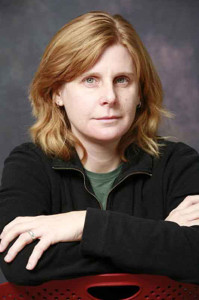In the spring of 2013, the University of Minnesota Press will publish my first work of creative nonfiction, Stories from Jonestown. The book is created from interviews with the survivors of Jonestown, which were initially conducted as the basis of the stage play, The People’s Temple.
Following the premiere of The People’s Temple at Berkeley Repertory Theater, the hundreds upon hundreds of pages of transcripts from the interviews as well as research material from the California Historical Society were packed away in storage boxes. About ten percent of the overall material we collected was used in the creation of the play. As the years progressed, I wanted more of that extraordinary body of research to live in the world.
In 2010, I was invited to give a series of lectures on art and ideas at the University of Minnesota. In one of those talks, I outlined the process of creating The People’s Temple. I described how my collaborators – Greg Pierotti, Margo Hall, and Stephen Wangh – and I spent three years traveling the country talking with Jonestown survivors, as well as members of the press, politicians, Bay Area community leaders, and families who lost relatives in Jonestown. I spoke of how we spent countless hours in the archive at the California Historical Society in San Francisco, where what remained of Peoples Temple – boxes of internal documents, letters, clippings and photographs – were stored. Finally, I discussed how, from over three hundred hours of tape-recorded interview material and excerpts from hundreds of pages of archival material, we created the play, The People’s Temple, which premiered at Berkeley Repertory Theatre in Berkeley, California in 2005 – in the community where many of the survivors and their families still reside.
At the end of the talk, Pieter Martin, one of the acquisition editors from the University of Minnesota Press introduced himself to me and asked if I had any interest in writing further about my experience with the Jonestown story.
When I thought about it, I realized a book project would be a great way to extend the life of the play beyond the final blackout in the theater. I wanted to create a book that would chart both the process of getting to know the survivor community, and of making the play with my collaborators. I wanted to create a document of an artistic process, as well as that of the survivor’s journeys before and after Jonestown.
I also rather naively assumed that it would be a natural – perhaps even easier – next step. I was mistaken. While the play was, at the time, the most challenging artistic endeavor of my professional life, the book turned out to be an even greater one.
I am grateful to all of those we interviewed, for the privilege of telling these stories. I am grateful too, to my collaborators Greg, Margo, and Steve, as well as Denice Stephenson and David Dower, for allowing me to write about our collective experience. I am also grateful to Fielding McGehee for his editorial and creative advice on behalf of the book. I have a newfound respect for all writers upon completion of this work.
As I continue to travel the country teaching and making my work, I am struck by how the next generations of students and young people know very little – if anything – about Jonestown. They recognize the catch phrase, “They drank the Kool-Aid,” but have no idea where it comes from, or the horrific context out of which it was born. I hope this book to be a document that future generations can turn to, to understand this complicated history and to understand the story of Jonestown through the words of the survivors themselves.
I look forward to sharing this book with all of you, and with the rest of the world.
